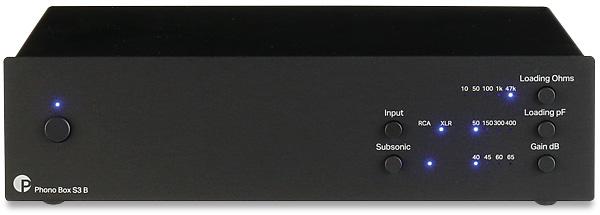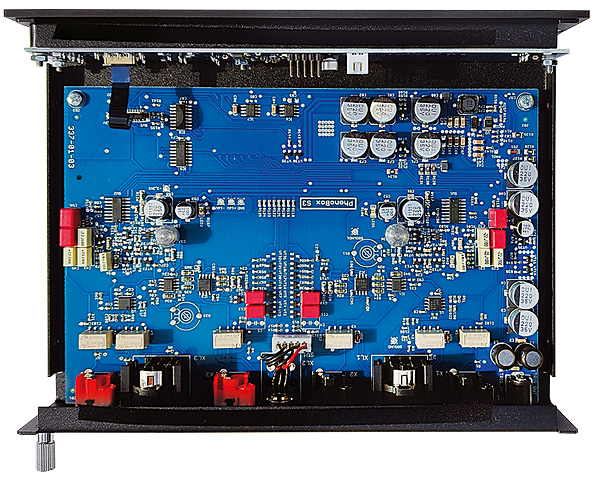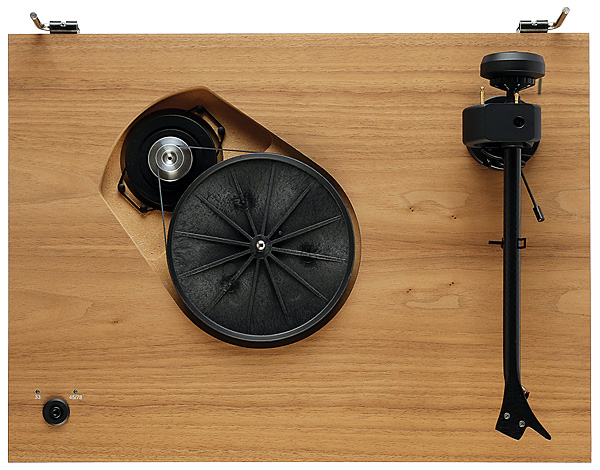Pro-Ject X2 B/Phono Box S3 B Turntable/Phono Preamp

 Moving-coil pick-ups are inherently 'balanced' and Pro-Ject is determined to reveal them at their best with this balanced-wired version of the X2 deck and phono preamp
Moving-coil pick-ups are inherently 'balanced' and Pro-Ject is determined to reveal them at their best with this balanced-wired version of the X2 deck and phono preamp
One burning question is begged by the arrival of Pro-Ject's X2 B turntable and Phono Box S3 B phono stage: why did it take so long for the industry to simplify a balanced vinyl-playing front-end? It's not like balanced operation wasn't adopted by high-end listeners decades ago as superior to single-ended for both line-level sources – DACs and top-flight CD players – and pre-to-power amp connections. MC cartridges are inherently balanced. So why the wait?
Pro-Ject, ever eager to solve such problems at sane prices, has managed to create a pairing which achieves balanced LP playback for £1599 for the X2 B record deck and £399 for the S3 B phono stage. It gets better, as the X2 B arrives with Ortofon's superb Quintet Red moving-coil cartridge, worth £250-£270 (depending on your choice of retailer).
The X2 B adds to the RCA phono sockets beneath the back of the plinth a single mini-XLR socket which handles both left and right channels in balanced mode. Otherwise, it's the familiar X2 [HFN Nov '19] with a choice of finishes, including gloss black, satin black or white, or the handsome wooden base of the review sample. Dimensions are 460x150x340mm (whd) and the weight is 10kg, clearly the next range up from the much-loved Debut line. It provides three electronically controlled speeds (yes, including 78rpm with a dedicated belt); a 9in carbon/aluminium tonearm fully adjustable for VTA and azimuth; a chunky 30mm-thick, 2kg acrylic platter; and felt mat.

S For Satisfying
For the Phono Box S3 B, there's the full complement of adjustments for MM and MC cartridges, including loadings of 10, 50, 100, 1k and 47kohm, and four for capacitance. Gain can be selected across +40dB, +45dB, +60dB or +65dB, and it was interesting to learn that the Ortofon Quintet Red had enough output to satisfy those enthusiasts who believe that MCs sound better with 47kohm loading, with the S3 B set at +60dB gain. There is also a subsonic filter, while a pushbutton selects the RCA single-ended or mini-XLR balanced inputs around the back. There are also full-size XLRs and RCAs for the output here.
My only grumble is the choice of a mini 5-pin XLR, as the turntable clearly has enough space to fit a pair of the more commonly used full-sized connections. I also have no doubt the back of the Phono Box S3 B could be made to accommodate them as well. This would have made life easier for cable devotees.
Still, what Pro-Ject gives you is the means to perform swift A/B comparisons, provided the preamp or integrated amp has both single-ended and balanced inputs. It worked out perfectly for me, despite the lack of remote switching between the Phono Box S3 B's XLR and RCA inputs. I was able to feed the S3 B into an Audio Research REF 6SE preamp [HFN Jan '21] and flip between the former's single-ended and balanced outputs from the hot seat.

In every case, the phono amp sounded better from its balanced outputs: quieter, with a more solid lower register. Before setting it up with the X2 B and the Ortofon Quintet Red, I fed the S3 B with the output from a Koetsu Urushi [HFN Nov '19], as well as from a Pro-Ject Debut Pro [HFN Sep '21] with an MM Ortofon cartridge, and there was no doubt that balanced was superior in every way possible. It just went on and on: background noise reduction, openness, a wider and deeper soundstage.
There are concrete reasons why. The most visible demonstration of MM cartridges not being balanced is the old three-pin connection on Decca cartridges. Those MM cartridges have separate wiring for the left and right hot channels, but the ground channels are shared on a single pin. In theory, then, MM cartridges all along, from time immemorial, could have gotten by with three-pin connections. But four pins became the standard with the right channel ground also connected to the MM generator shield, while the left is not.
Moving-coils, on the other hand, separate the ground/return channels into left and right, but the debate over balanced-vs-single-ended connections and circuitry will rumble on. Balanced offers the potential of reduced common-mode noise and distortion, but at the expense of transformer-coupling and/or more complex circuitry. Nevertheless, Pro-Ject demonstrates here that balanced connections offer users of high-resolution systems lower noise at the very least.
![]() Elevated Listening
Elevated Listening
As both the deck and the phono amp are familiar in unbalanced form, I first listened to the Phono Box S3 B's single-ended and balanced outputs with both MC and MM cartridges. I used identical cables from the Phono Box S3 B to the preamp, one XLR-to-XLR, the other phono-to-phono, and matched the levels. What I heard in balanced mode, even with the record deck delivering a single-ended output, elevates this £399 purchase to four-figure levels.
























































